Duct-to-mucosa versus other types of pancreaticojejunostomy for the prevention of postoperative pancreatic fistula following pancreaticoduodenectomy
- PMID: 35289922
- PMCID: PMC8923262
- DOI: 10.1002/14651858.CD013462.pub2
Duct-to-mucosa versus other types of pancreaticojejunostomy for the prevention of postoperative pancreatic fistula following pancreaticoduodenectomy
Abstract
Background: Postoperative pancreatic fistula is a common and serious complication following pancreaticoduodenectomy. Duct-to-mucosa pancreaticojejunostomy has been used in many centers to reconstruct pancreatic digestive continuity following pancreatoduodenectomy, however, its efficacy and safety are uncertain.
Objectives: To assess the benefits and harms of duct-to-mucosa pancreaticojejunostomy versus other types of pancreaticojejunostomy for the reconstruction of pancreatic digestive continuity in participants undergoing pancreaticoduodenectomy, and to compare the effects of different duct-to-mucosa pancreaticojejunostomy techniques.
Search methods: We searched the Cochrane Library (2021, Issue 1), MEDLINE (1966 to 9 January 2021), Embase (1988 to 9 January 2021), and Science Citation Index Expanded (1982 to 9 January 2021).
Selection criteria: We included all randomized controlled trials (RCTs) that compared duct-to-mucosa pancreaticojejunostomy with other types of pancreaticojejunostomy (e.g. invagination pancreaticojejunostomy, binding pancreaticojejunostomy) in participants undergoing pancreaticoduodenectomy. We also included RCTs that compared different types of duct-to-mucosa pancreaticojejunostomy in participants undergoing pancreaticoduodenectomy.
Data collection and analysis: Two review authors independently identified the studies for inclusion, collected the data, and assessed the risk of bias. We performed the meta-analyses using Review Manager 5. We calculated the risk ratio (RR) for dichotomous outcomes and the mean difference (MD) for continuous outcomes with 95% confidence intervals (CIs). For all analyses, we used the random-effects model. We used the Cochrane RoB 1 tool to assess the risk of bias. We used GRADE to assess the certainty of the evidence for all outcomes.
Main results: We included 11 RCTs involving a total of 1696 participants in the review. One RCT was a dual-center study; the other 10 RCTs were single-center studies conducted in: China (4 studies); Japan (2 studies); USA (1 study); Egypt (1 study); Germany (1 study); India (1 study); and Italy (1 study). The mean age of participants ranged from 54 to 68 years. All RCTs were at high risk of bias. Duct-to-mucosa versus any other type of pancreaticojejunostomy We included 10 RCTs involving 1472 participants comparing duct-to-mucosa pancreaticojejunostomy with invagination pancreaticojejunostomy: 732 participants were randomized to the duct-to-mucosa group, and 740 participants were randomized to the invagination group after pancreaticoduodenectomy. Comparing the two techniques, the evidence is very uncertain for the rate of postoperative pancreatic fistula (grade B or C; RR 1.45, 95% CI 0.64 to 3.26; 7 studies, 1122 participants; very low-certainty evidence), postoperative mortality (RR 0.77, 95% CI 0.39 to 1.49; 10 studies, 1472 participants; very low-certainty evidence), rate of surgical reintervention (RR 1.12, 95% CI 0.65 to 1.95; 10 studies, 1472 participants; very low-certainty evidence), rate of postoperative bleeding (RR 0.85, 95% CI 0.51 to 1.42; 9 studies, 1275 participants; very low-certainty evidence), overall rate of surgical complications (RR 1.12, 95% CI 0.92 to 1.36; 5 studies, 750 participants; very low-certainty evidence), and length of hospital stay (MD -0.41 days, 95% CI -1.87 to 1.04; 4 studies, 658 participants; very low-certainty evidence). The studies did not report adverse events or quality of life outcomes. One type of duct-to-mucosa pancreaticojejunostomy versus a different type of duct-to-mucosa pancreaticojejunostomy We included one RCT involving 224 participants comparing duct-to-mucosa pancreaticojejunostomy using the modified Blumgart technique with duct-to-mucosa pancreaticojejunostomy using the traditional interrupted technique: 112 participants were randomized to the modified Blumgart group, and 112 participants were randomized to the traditional interrupted group after pancreaticoduodenectomy. Comparing the two techniques, the evidence is very uncertain for the rate of postoperative pancreatic fistula (grade B or C; RR 1.51, 95% CI 0.61 to 3.75; 1 study, 210 participants; very low-certainty evidence), postoperative mortality (there were no deaths in either group; 1 study, 210 participants; very low-certainty evidence), rate of surgical reintervention (RR 1.93, 95% CI 0.18 to 20.91; 1 study, 210 participants; very low-certainty evidence), rate of postoperative bleeding (RR 2.89, 95% CI 0.12 to 70.11; 1 study, 210 participants; very low-certainty evidence), overall rate of surgical complications (RR 1.10, 95% CI 0.80 to 1.51; 1 study, 210 participants; very low-certainty evidence), and length of hospital stay (15 days versus 15 days; 1 study, 210 participants; very low-certainty evidence). The study did not report adverse events or quality of life outcomes.
Authors' conclusions: The evidence is very uncertain about the effects of duct-to-mucosa pancreaticojejunostomy compared to invagination pancreaticojejunostomy on any of the outcomes, including rate of postoperative pancreatic fistula (grade B or C), postoperative mortality, rate of surgical reintervention, rate of postoperative bleeding, overall rate of surgical complications, and length of hospital stay. The evidence is also very uncertain whether duct-to-mucosa pancreaticojejunostomy using the modified Blumgart technique is superior, equivalent or inferior to duct-to-mucosa pancreaticojejunostomy using the traditional interrupted technique. None of the studies reported adverse events or quality of life outcomes.
Trial registration: ClinicalTrials.gov NCT03600584.
Copyright © 2022 The Cochrane Collaboration. Published by John Wiley & Sons, Ltd.
Conflict of interest statement
HH: none known Zhuyin Li: none known ZZ: none known YC: none known Zuojin Liu: none known JG: none known YD: none known
Figures



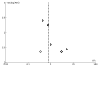
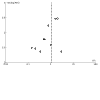


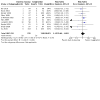

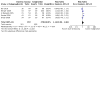



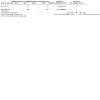





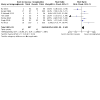
Update of
- doi: 10.1002/14651858.CD013462
Similar articles
-
Pancreaticojejunostomy versus pancreaticogastrostomy reconstruction for the prevention of postoperative pancreatic fistula following pancreaticoduodenectomy.Cochrane Database Syst Rev. 2017 Sep 12;9(9):CD012257. doi: 10.1002/14651858.CD012257.pub2. Cochrane Database Syst Rev. 2017. PMID: 28898386 Free PMC article.
-
Prophylactic abdominal drainage for pancreatic surgery.Cochrane Database Syst Rev. 2025 May 16;5(5):CD010583. doi: 10.1002/14651858.CD010583.pub6. Cochrane Database Syst Rev. 2025. PMID: 40377137 Review.
-
Fibrin sealants for the prevention of postoperative pancreatic fistula following pancreatic surgery.Cochrane Database Syst Rev. 2018 Jun 23;6(6):CD009621. doi: 10.1002/14651858.CD009621.pub3. Cochrane Database Syst Rev. 2018. Update in: Cochrane Database Syst Rev. 2020 Mar 11;3:CD009621. doi: 10.1002/14651858.CD009621.pub4. PMID: 29934987 Free PMC article. Updated.
-
Prophylactic abdominal drainage for pancreatic surgery.Cochrane Database Syst Rev. 2021 Dec 18;12(12):CD010583. doi: 10.1002/14651858.CD010583.pub5. Cochrane Database Syst Rev. 2021. Update in: Cochrane Database Syst Rev. 2025 May 16;5:CD010583. doi: 10.1002/14651858.CD010583.pub6. PMID: 34921395 Free PMC article. Updated.
-
Prophylactic abdominal drainage for pancreatic surgery.Cochrane Database Syst Rev. 2018 Jun 21;6(6):CD010583. doi: 10.1002/14651858.CD010583.pub4. Cochrane Database Syst Rev. 2018. Update in: Cochrane Database Syst Rev. 2021 Dec 18;12:CD010583. doi: 10.1002/14651858.CD010583.pub5. PMID: 29928755 Free PMC article. Updated.
Cited by
-
Dunking Pancreaticojejunostomy With Braun's Jejunojejunostomy: Perioperative Outcomes of a Hundred Pancreaticoduodenectomies.Cureus. 2024 Sep 9;16(9):e68988. doi: 10.7759/cureus.68988. eCollection 2024 Sep. Cureus. 2024. PMID: 39385867 Free PMC article.
-
State of the Art in Pancreatic Surgery: Some Unanswered Questions.J Clin Med. 2022 May 17;11(10):2821. doi: 10.3390/jcm11102821. J Clin Med. 2022. PMID: 35628946 Free PMC article.
-
An analysis of risk factors for clinically relevant pancreatic fistulas after laparoscopic pancreaticoduodenectomy.Medicine (Baltimore). 2023 May 19;102(20):e33759. doi: 10.1097/MD.0000000000033759. Medicine (Baltimore). 2023. PMID: 37335734 Free PMC article.
-
Topical application of Glauber's salt accelerates the absorption of abdominal fluid after pancreatectomy.BMC Surg. 2024 Dec 21;24(1):398. doi: 10.1186/s12893-024-02696-6. BMC Surg. 2024. PMID: 39709411 Free PMC article.
-
Pancreatectomy and Pancreatic Surgery.Life (Basel). 2023 Jun 16;13(6):1400. doi: 10.3390/life13061400. Life (Basel). 2023. PMID: 37374182 Free PMC article.
References
References to studies included in this review
Bai 2016 {published data only}
-
- Bai X, Zhang Q, Gao S, Lou J, Li G, Zhang Y, et al.Duct-to-mucosa vs invagination for pancreaticojejunostomy after pancreaticoduodenectomy: a prospective, randomized controlled trial from a single surgeon. Journal of the American College of Surgeons 2016;222(1):10-18. [DOI: 10.1016/j.jamcollsurg.2015.10.003] - DOI - PubMed
Bassi 2003 {published data only}
Berger 2009 {published data only}
-
- Berger AC, Howard TJ, Kennedy EP, Sauter PK, Bower-Cherry M, Dutkevitch S, et al.Does type of pancreaticojejunostomy after pancreaticoduodenectomy decrease rate of pancreatic fistula? A randomized, prospective, dual-institution trial. Journal of the American College of Surgeons 2009;208(5):738-47. [DOI: 10.1016/j.jamcollsurg.2008.12.031] - DOI - PubMed
Chou 1996 {published data only}
-
- Chou FF, Sheen-Chen SM, Chen YS, Chen MC, Chen CL.Postoperative morbidity and mortality of pancreaticoduodenectomy for periampullary cancer. European Journal of Surgery 1996;162(6):477-81. - PubMed
El Nakeeb 2015 {published data only}
-
- El Nakeeb A, El Hemaly M, Askr W, Abd Ellatif M, Hamed H, Elghawalby A, et al.Comparative study between duct to mucosa and invagination pancreaticojejunostomy after pancreaticoduodenectomy: a prospective randomized study. International Journal of Surgery 2015;16(Pt A):1-6. [DOI: 10.1016/j.ijsu.2015.02.002] - DOI - PubMed
Han 2009 {published data only}
-
- Han J, Wang X, Quan Z, Zhu W.Duct-to-mucosa anastomosis and incidence of pancreatic fistula following pancreaticoduodenectomy. Journal of Medical Postgraduates 2003;22(9):961-4. [DOI: 10.16571/j.cnki.1008-8199.2009.09.017] - DOI
Hirono 2019 {published data only}
-
- Hirono S, Kawai M, Okada KI, Miyazawa M, Kitahata Y, Hayami S, et al.Modified blumgart mattress suture versus conventional interrupted suture in pancreaticojejunostomy during pancreaticoduodenectomy: randomized controlled trial. Annals of Surgery 2019;269(2):243-51. [DOI: 10.1097/SLA.0000000000002802] - DOI - PMC - PubMed
Langrehr 2005 {published data only}
Senda 2018 {published data only}
Singh 2018 {published data only}
Xu 2015 {published data only}
-
- Xu J, Zhang B, Shi S, Qin Y, Ji S, Xu W, et al.Papillary-like main pancreatic duct invaginated pancreaticojejunostomy versus duct-to-mucosa pancreaticojejunostomy after pancreaticoduodenectomy: A prospective randomized trial. Surgery 2015;158(5):1211-8. [DOI: 10.1016/j.surg.2015.04.020] - DOI - PubMed
References to studies excluded from this review
Batignani 2005 {published data only}
-
- Batignani G, Fratini G, Zuckermann M, Bianchini E, Tonelli F.Comparison of Wirsung-jejunal duct-to-mucosa and dunking technique for pancreatojejunostomy after pancreatoduodenectomy. Hepatobiliary and Pancreatic Diseases International 2005;4(3):450-5. - PubMed
Casadei 2020 {published data only}
-
- Casadei R, Ricci C, Ingaldi C, Alberici L, De Raffele E, Minni F.Comparison of blumgart anastomosis with duct-to-mucosa anastomosis and invagination pancreaticojejunostomy after pancreaticoduodenectomy: a single-center propensity score matching analysis. Journal of Gastrointestinal Surgery 2020;1:29. [DOI: 10.1007/s11605-020-04528-3] - DOI - PubMed
Lee 2018 {published data only}
Peng 2003 {published data only}
Peng 2007 {published data only}
Reissman 1995 {published data only}
Wei 2015 {published data only}
Wu 2019 {published data only}
-
- Wu T, Guo Y, Bi J, Liu S, Guo Y, Bao S.Modified duct-to-mucosa versus conventional pancreaticoenterostomy for pancreaticoduodenectomy: a retrospective cohort study based on propensity score matching analysis. World Journal of Surgical Oncology 2019;17(1):5. [DOI: 10.1186/s12957-018-1557-5] - DOI - PMC - PubMed
References to studies awaiting assessment
Velineni 2019 {published data only}
-
- Velineni SV, Somasundaram S, Rebella P, Guduru VR.Impact of modified duct to mucosa (Buchler) vs binding PJ (Pengs) pancreaticojejunostomy on the functional and morphological changes in pancreatic remnant after pancreaticoduodenectomy - a randomised control study. HPB 2019;21(Suppl 2):S318.
References to ongoing studies
NCT03600584 {published data only}
-
- NCT03600584.Modified one-layer duct-to-mucosa versus invagination for pancreaticojejunostomy after pancreaticoduodenectomy. clinicaltrials.gov/ct2/show/NCT03600584 (accessed 29 November 2019).
Pan 2016 {published data only}
Additional references
Bai 2013
-
- Bai XL, Zhang Q, Masood N, Masood W, Gao SL, Zhang Y, et al.Duct-to-mucosa versus invagination pancreaticojejunostomy after pancreaticoduodenectomy: a meta-analysis. Chinese Medical Journal 2013;126(22):4340-7. - PubMed
Bassi 2005
Bassi 2017
Bray 2018
Callery 2013
Cao 2020
-
- Cao Z, Luo W, Qiu J, Liu Y, Zheng L, Zhang T.Is invagination anastomosis more effective in reducing clinically relevant pancreatic fistula for soft pancreas after pancreaticoduodenectomy under novel fistula criteria: a systematic review and meta-analysis. Frontiers In Oncology 2020;10:1637. [DOI: 10.3389/fonc.2020.01637] - DOI - PMC - PubMed
Casadei 2013
Chen 2015
Cheng 2014
Cheng 2017
-
- Cheng Y, Briarava M, Lai M, Wang X, Tu B, Cheng N, et al.Pancreaticojejunostomy versus pancreaticogastrostomy reconstruction for the prevention of postoperative pancreatic fistula following pancreaticoduodenectomy. Cochrane Database of Systematic Reviews 2017, Issue 9. Art. No: CD012257. [DOI: 10.1002/14651858.CD012257.pub2] - DOI - PMC - PubMed
Clavien 2009
Connor 2005
Conzo 2015
-
- Conzo G, Gambardella C, Tartaglia E, Sciascia V, Mauriello C, Napolitano S, et al.Pancreatic fistula following pancreatoduodenectomy. Evaluation of different surgical approaches in the management of pancreatic stump. Literature review. International Journal of Surgery 2015;21(Suppl 1):S4-9. [DOI: 10.1016/j.ijsu.2015.04.088] - DOI - PubMed
CTRI/2010/091/000531
-
- CTRI/2010/091/000531.Duct-to-mucosa and dunking methods of pancreaticojejunostomy after pancreaticoduodenectomy? A randomized clinical trial. ctri.nic.in/Clinicaltrials/pdf_generate.php?trialid=1704&EncHid=&... (first received 25 May 2010).
Deng 2020
Dindo 2004
-
- Dindo D, Demartines N, Clavien PA.Classification of surgical complications: a new proposal with evaluation in a cohort of 6336 patients and results of a survey. Annals of Surgery 2004;240(2):205-13. [DOI: 10.1097/01.sla.0000133083.54934.ae] - DOI - PMC - PubMed
Dong 2016
Egger 1997
Ferlay 2019
GBD 2019
-
- GBD 2017 Pancreatic Cancer Collaborators.The global, regional, and national burden of pancreatic cancer and its attributable risk factors in 195 countries and territories, 1990-2017: a systematic analysis for the global burden of disease study 2017. Lancet Gastroenterology & Hepatology 2019;4(12):934-47. [DOI: 10.1016/S2468-1253(19)30347-4] - DOI - PMC - PubMed
GRADEpro GDT [Computer program]
-
- GRADEpro GDT.Version accessed 4 October 2018. Hamilton (ON): McMaster University (developed by Evidence Prime), 2015. Available at gradepro.org.
Gurusamy 2013
Guyatt 2008
-
- Guyatt G, Oxman A, Vist G, Kunz R, Falck-Ytter Y, Alonso-Coello P, et al.GRADE: an emerging consensus on rating quality of evidence and strength of recommendations. BMJ 2008;336(7650):924-6. [DOI: 10.1136/bmj.39489.470347.AD] - DOI - PMC - PubMed
Hackert 2011
Higgins 2003
Higgins 2017
-
- Higgins JP, Altman DG, Sterne JA, editor(s).Chapter 8: Assessing risk of bias in included studies. In: Higgins JP, Churchill R, Chandler J, Cumpston MS, editor(s). Cochrane Handbook for Systematic Reviews of Interventions. Version 5.2.0 (updated June 2017), Cochrane, 2017. Available from www.training.cochrane.org/handbook.
Higgins 2021
-
- Higgins JP, Thomas J, Chandler J, Cumpston M, Li T, Page MJ, Welch VA, editor(s).Cochrane Handbook for Systematic Reviews of Interventions. Version 6.2 (updated February 2021). Cochrane, 2021. Available from www.training.cochrane.org/handbook.
Hua 2015
Hüttner 2016
-
- Hüttner FJ, Fitzmaurice C, Schwarzer G, Seiler CM, Antes G, Büchler MW, et al.Pylorus-preserving pancreaticoduodenectomy (pp Whipple) versus pancreaticoduodenectomy (classic Whipple) for surgical treatment of periampullary and pancreatic carcinoma. Cochrane Database of Systematic Reviews 2016, Issue 2. Art. No: CD006053. [DOI: 10.1002/14651858.CD006053.pub6] - DOI - PMC - PubMed
Kilambi 2018
-
- Kilambi R, Singh AN.Duct-to-mucosa versus dunking techniques of pancreaticojejunostomy after pancreaticoduodenectomy: Do we need more trials? A systematic review and meta-analysis with trial sequential analysis. Journal of Surgical Oncology 2018;117(5):928-39. [DOI: 10.1002/jso.24986] - DOI - PubMed
Klaiber 2015
-
- Klaiber U, Probst P, Knebel P, Contin P, Diener MK, Büchler MW, et al.Meta-analysis of complication rates for single-loop versus dual-loop (Roux-en-Y) with isolated pancreaticojejunostomy reconstruction after pancreaticoduodenectomy. British Journal of Surgery 2015;102(4):331-40. [DOI: 10.1002/bjs.9703] - DOI - PubMed
Kone 2020
Lai 2009
Lyu 2018
Maemura 2015
Maisonneuve 2019
McMillan 2016
Mizrahi 2020
NCT01695447
-
- NCT01695447.Randomised controlled trail of duct-to-mucosa versus invagination for pancreaticojejunostomy after pancreaticoduodenectomy. clinicaltrials.gov/ct2/show/NCT01695447 (first received 28 September 2012).
NCT01731821
-
- NCT01731821.A prospective randomized clinical trial of two surgical techniques for pancreaticojejunostomy in patients undergoing pancreaticoduodenectomy: nonstented stump-closed vs duct-to-mucosa pancreaticojejunostomy. clinicaltrials.gov/ct2/show/NCT01731821 (first received 22 November 2012).
NCT01898780
-
- NCT01898780.Horizontal mattress vs. interrupted suture in surgical techniques of pancreaticojejunostomy. clinicaltrials.gov/ct2/show/NCT01898780 (first received 12 July 2013).
NCT02142517
-
- NCT02142517.Comparative study between duct to mucosa and invagination pancreaticojejunostomy after pancreaticoduodenectomy: a prospective randomized study. clinicaltrials.gov/ct2/show/NCT02142517 (first received 20 May 2014).
Page 2021
Park 2021
Peng 2002
Reeves 2021
-
- Reeves BC, Deeks JJ, Higgins JP, Shea B, Tugwell P, Wells GA.Chapter 24: Including non-randomized studies on intervention effects. In: Higgins JP, Thomas J, Chandler J, Cumpston M, Li T, Page MJ, Welch VA, editor(s). Cochrane Handbook for Systematic Reviews of Interventions. Version 6.2 (updated February 2021). Cochrane, 2021. Available from www.training.cochrane.org/handbook.
Review Manager 2020 [Computer program]
-
- Review Manager 5 (RevMan 5).Version 5.4. Copenhagen: Nordic Cochrane Centre, The Cochrane Collaboration, 2020.
Rivas 2019
Shrikhande 2017
Siegel 2021
Sun 2016
Testini 2016
UMIN000005890
-
- UMIN000005890.Effect of invagination vs. duct to mucosa pancreaticojejunostomy on postoperative pancreatic fistula during pancreaticoduodenectomy: a randomized controlled trial. upload.umin.ac.jp/cgi-open-bin/ctr_e/ctr_view.cgi?recptno=R000006859 (first received 30 June 2011).
Varco 1945
-
- Varco RL.A method of implanting the pancreatic duct into the jejunum in the Whipple operation for carcinoma of the pancreas; case report. Surgery 1945;18:569-73. - PubMed
Xiang 2019
Xiong 2014
References to other published versions of this review
Cheng 2019
-
- Cheng Y, He S, Xia J, Ding X, Liu Z, Gong J.Duct-to-mucosa pancreaticojejunostomy for the prevention of postoperative pancreatic fistula following pancreaticoduodenectomy. Cochrane Database of Systematic Reviews 2019, Issue 10. Art. No: CD013462. [DOI: 10.1002/14651858.CD013462] - DOI - PMC - PubMed
Publication types
MeSH terms
Associated data
LinkOut - more resources
Full Text Sources
Medical

